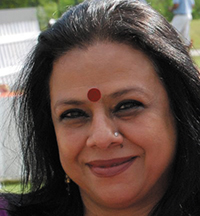Tag: history
Embracing the Other
Shahidul Alam?s new show combats Islamophobia, extremism: The Punch
For celebrated Bangladeshi photographer, writer and curator Shahidul Alam, a just world is a plural space where many thoughts can coexist. His latest show, Embracing the Other, opens in Dhaka on May 8
“If you?re not making certain people uncomfortable by your presence, you are probably doing something wrong.? Bangladesh?s best-known photographer, writer and curator Shahidul Alam, 61, has lived by that adage, which, by and large, sums up why he does what he does.
For Alam, who has been actively involved in the movement for democracy in Bangladesh for over three decades, photojournalism was a corollary of being an activist on the streets, seeking to see himself on the edge, so as to constantly ?feel the heat?, questioning, going beyond the obvious, not settling for safe options.
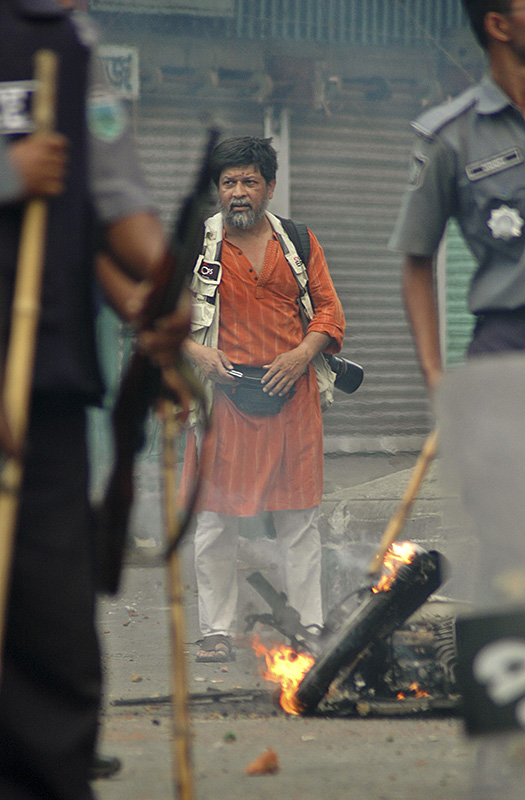
In Bangladesh, Alam is credited with many ?firsts?: Among other things, he set up Drik Picture Library, the country?s first picture agency, in 1989; Pathshala, its first photo school in 1998; and the first email network in the country in 1994. He also founded the first photo festival in Asia, Chobi Mela, in 2000. Continue reading “Embracing the Other”
The spirit of a ghostly fabric
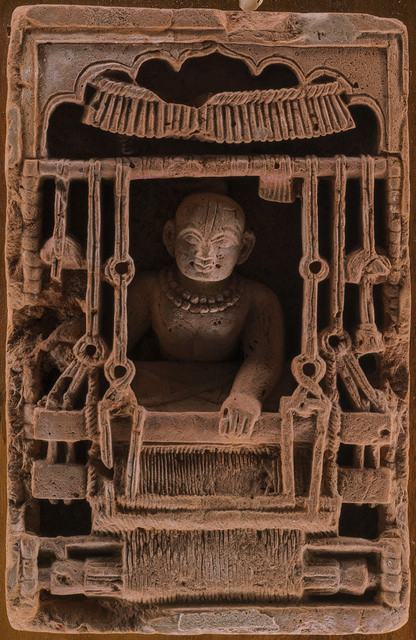
Having heard Saif speak of muslin over the last three years, I had gained some knowledge, albeit second hand. Going out filming with him to museums, arboretums and libraries, I had met some of the world?s leading experts. Lived part of the history. A surprise awaited me. It is not a book written by an expert, but a labour of love, written by a hungry enthusiast, not yet jaded by the weight of authority. It has all the facts. The rigour of research. The scholarly precision. The concern for one?s fellow human. Continue reading “The spirit of a ghostly fabric”
Muslin show goes ahead
As things happen in this wonderful country of ours. Problems come up and solutions emerge. Everything is now under control. We are working flat out and a fabulous show is on offer!
Just held the first copy of the book ‘Muslin, Our Story’ in my hand and the book looks absolutely fabulous! We only have a few copies for the opening, but the rest are arriving by ship. Book your copies now. They are selling like hot cakes. Boy do we have a show on our hands!
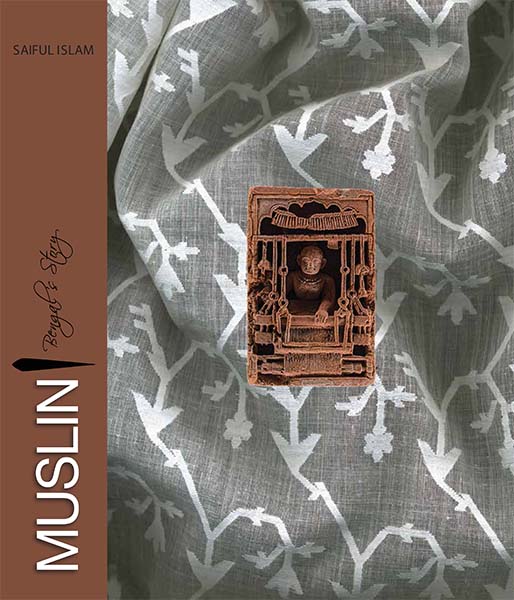
Golam Kasem Daddy Letters: 1
73, Indira Road
Dhaka
8. 9. 97
Dear Dr. Alam,
I am in difficulty. I am unwell, but I am alone and there is none to help me. I am having slight attack of fever and am very weak. Many thanks for inviting me at Drik function, but I am very sorry I am unable to attend due to my illness. However, I hope the function will be successful. Thanks for 2 doorscreens, and many thanks to your mother for food. Manuscript for my photobook is ready for you. Please take it at your convenience.
Yours Sincerely,
Daddy
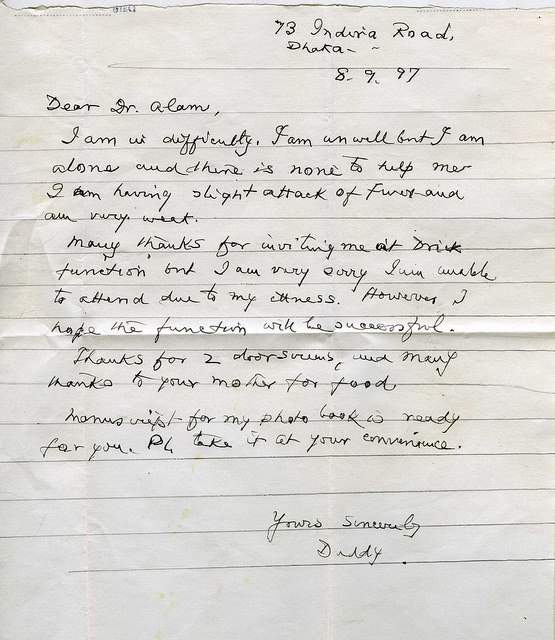
Other letters by Daddy:
When the mind says yes:
The Statesman, and the Photographer
The statesman, and the photographer
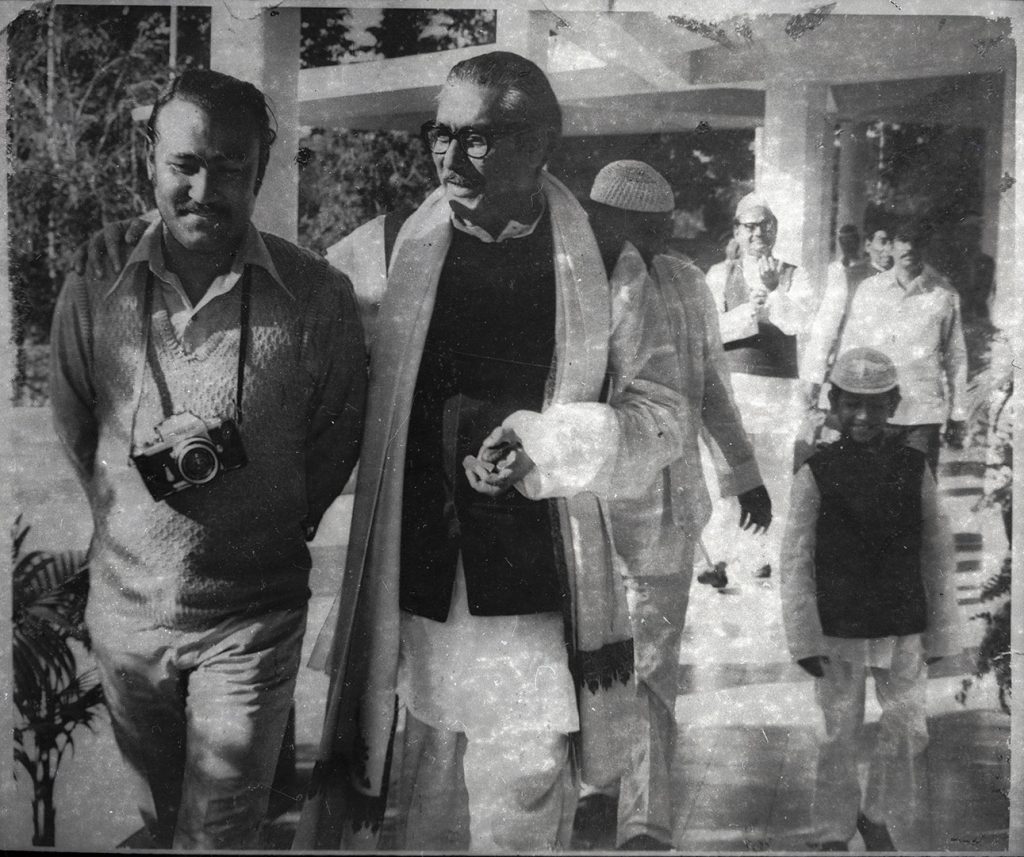
LOOKING at this photograph, one of the few in our library where the photographer is unknown, I realise how times have changed. This is the undisputed leader of a country with his arms across the shoulder of a newspaper photographer not known for being affiliated to his party.
No security guards, no party goons, no chamchas. Both men are at ease with the situation. The smiles, the casual gait, Rashid Bhai with his camera dangling, a single prime lens. Not even a camera bag (and this was the time of film when you only had 36 exposures). How times have changed. Sure, we live in a more security conscious world, but the distance between the leaders of today, and the people, isn?t simply about changed situations, it is about changed attitudes. Today the proximity between leaders and the people surrounding them has much more to do with business and benefits, than with humility and largesse. There was much more give and much less take. Continue reading “The Statesman, and the Photographer”
Rare and Unseen photographs of Bangabandhu Sheikh Mujibur Rahman from the Drik archives

A self-taught photographer with a strong sense of humour Rashid Talukder received a Lifetime Achievement Award at the Chobi Mela international photography festival in Dhaka, in 2006. His images of the war of liberation of Bangladesh and the political events leading up to it, are the most comprehensive visual documentation of Bangladesh’s political history on record. Rashid Talukder handed over his entire collection of negatives to the Drik Picture Library in Dhaka before he passed away.
With support from Drik’s long standing partner, the Prince Claus Fund Drik has been scanning the Talukder archives of over 165,000 original negatives. The archives contain rare images, many of them never previously seen. These include major political events, everyday life and photographs of Bangabandhu Sheikh Mujibur Rahman, the founder of Bangladesh, whom Talukder was especially close to. The photographs show Mujib, not only as a statesman, but also as someone close to his people. There are also private and intimate moments which give insights not only to the public figure, but also to the individual.
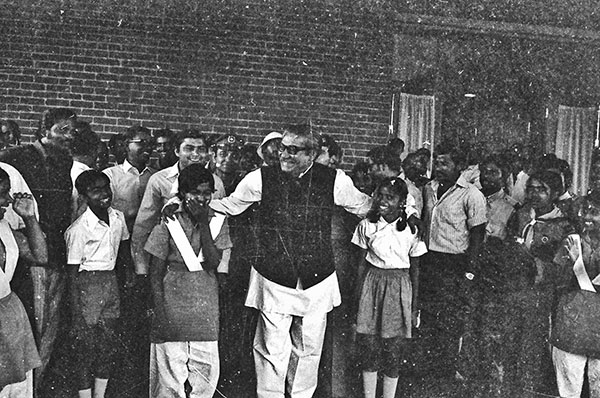
While Talukder is virtually unknown outside of Bangladesh, he was one of the foremost chroniclers of the struggle for independence, photographing its origins in the language movement of the 1950s and continuing through the war?s aftermath.
Now hailed as a founding father of Bangladeshi photojournalism, Mr. Talukder made some of the most important images of the war, which by some estimates claimed one million lives and turned 10 million of his countrymen into refugees. He also documented everyday life in Bangladesh during his 46-year career, during which he worked for the newspapers The Daily Sangbad and The Daily Ittefaq. Through an initiative of the new mayor of Dhaka North Annisul Huq, and his council members, a massive outdoor exhibition has been arranged at the iconic parliament building of Bangladesh, designed by Louis Kahn, based largely on the Drik archives. Special access has also been arranged for the general public where even rickshas will be allowed into the parliament complex.
Commemorating the 40th death anniversary of the father of the nation, this provides a rare opportunity for visitors not only to see these previously unseen photographs, but also visit this landmark building, considered one of the architectural masterpieces of the 20th century.
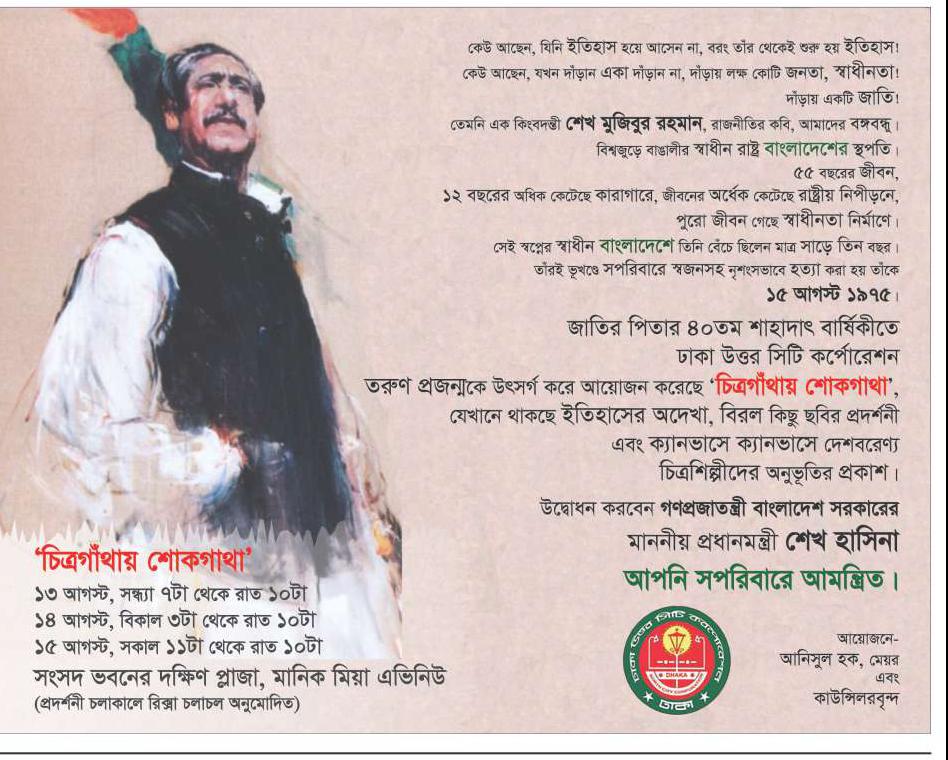
The honourable Prime Minister of Bangladesh, Sheikh Hasina, the daughter of Sheikh Mujibur Rahman, will inaugurate the exhibition today the 13th August 2015 at 5:00 pm.
ABOUT AFGHAN BOX CAMERA PHOTOGRAPHY: KAMRA-E-FAOREE

The Afghan Box Camera is a simple box-shaped wooden camera traditionally used by photographers working from a street pitch, who produce, by-and-large, instant identity portraits (aks: ???) for their clients. In Dari the camera is known as?kamra-e-faoree ().which means ‘instant camera’. It’s also less frequently called kamra-e-faoree-e-chobi (instant wooden camera) or kamra-e-chobi (wooden camera). In Pashtu the camera is sometimes referred to as da lastunri kamra (sleeve camera: ??????? ?????) because of the sleeve on the side of the camera that photographers insert their arm into.
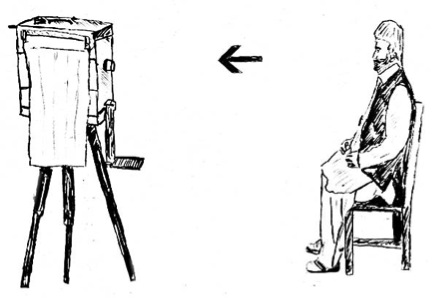 Continue reading “ABOUT AFGHAN BOX CAMERA PHOTOGRAPHY: KAMRA-E-FAOREE”
Continue reading “ABOUT AFGHAN BOX CAMERA PHOTOGRAPHY: KAMRA-E-FAOREE”
The Zaidi Studio
Zaidis Photographers, Masson Narsingdas Building, The Mall, Lahore in 1959
Photo by: Shahid Zaidi (Zaidis Photographers)

Dyal Singh Building, The Mall – Lahore c. 1959
The story of Zaidis Photographers starts in 1904, when two brothers, Syed Wazir Ali Zaidi and Syed Nazir Ali Zaidi, formerly students of Mayo School of Arts (now NCA) left Lahore in search of improving their photographic skills and become portrait painters and photographers. Continue reading “The Zaidi Studio”
Shahbag Square ? why we Pakistanis don?t know and don?t care
By Pervez Hoodbhoy
Published: February 15, 2013
The writer retired as professor of physics from Quaid-e-Azam University, Islamabad
Shahbag Square ? where?s that? Abdul Kader Mullah ? who?s he?
A bunch of university students in Islamabad, with whom I was informally conversing yesterday, hadn?t heard of either. Of course, they knew of Tahrir Square and Afzal Guru?s recent execution. But they showed little interest upon learning that Shahbag Square was in Dhaka and that, as we spoke, the city was seething with protest. Between 100,000 to 500,000 Bengalis had converged to Shahbag to sing patriotic songs, recite poems and read out episodes from Bangladesh?s history of the Liberation War. At the centre of the protesters? demands was Abdul Kader Mullah?s fate.
On February 5, the Bangladesh International Crimes Tribunal (ICT) found Mullah guilty in five out of the six charges against him. Known as Mirpurer Koshai (Butcher of Mirpur) because of his atrocities against citizens in the Mirpur area of Dhaka, he was charged with beheading a poet, raping an 11-year-old girl and murdering 344 people. The ICT sentenced Mullah, presently assistant secretary general of the Bangladesh Jamaat-e-Islami, to life in prison. For the protesters in Shahbag Square, this isn?t enough ? they want Mullah hanged. On the other side, the Jamaat-e-Islami protested violently and also took out demonstrations. But its efforts to influence global opinion foundered in spite of a well-funded effort. Continue reading “Shahbag Square ? why we Pakistanis don?t know and don?t care”

